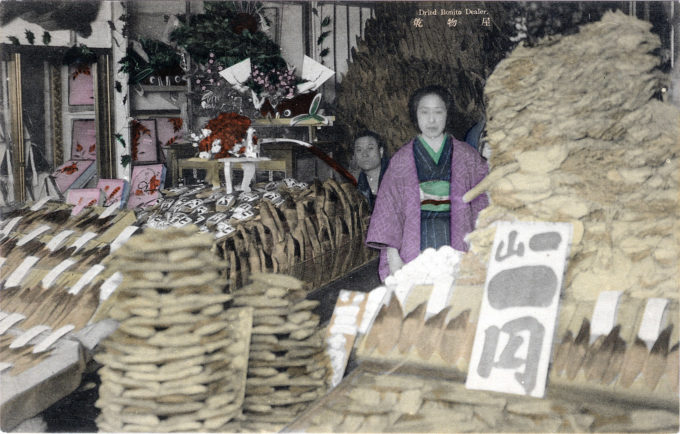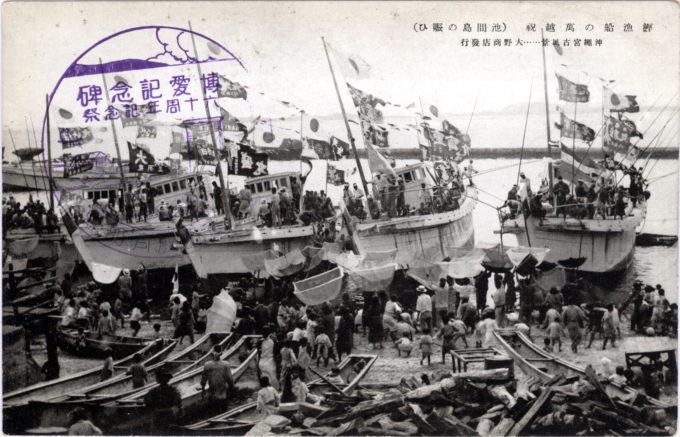
“Dried bonito dealer”, c. 1920. Bonitos are a tribe of medium-sized, ray-finned predatory fish from the same scientific family as mackerel and tuna, and which closely resembles the skipjack tuna. The name comes from the Spanish bonito, ‘pretty’. Dried flaked bonito, known as katsuo-bushi, is the chief ingredient used for seasoning or simmering food in Japan.
See also:
“Fishing boat”, c. 1910.
“A fishing place in Awaji”, Hyogo Prefecture, c. 1920.
Uogashi (Fish Market) at Nihonbashi, c. 1910.
“Bonito fishery is peculiar to Japan, as no other country is engaged in it. It is one of the most important industries in Japan, the annual catch being as much as 50,000 tons or more, valued at approximately 7,000,000 yen. The fishing is conducted along the entire Pacific coast of Japan, but the most important bonito centres are Shizuoka, Kochi, and Kagoshima prefectures. In the southern provinces, this fish may be seen all through the year, but its fishing season is from April to October, as a rule
“The manufacture of this article is done by first cutting the fish into four pieces (small fish into two pieces) and boiling them in fresh water. It is then smoked and dried in the sun. When thoroughly dried, it is given finishing touches by trimming and moulding. The latter process is said to cause certain chemical changes in the bonito, and it is the most important step in the process of curing the bonito, which may be kept for years.
“The bonito is produced in the prefectures of Chiba, Ibaraki, Nagasaki, Miye, Wakayama, Fuku shima, and Iwate, but Shizuoka, Kochi and Kagoshima prefectures are centres for producing the bonito of best quality.
“For this fishing, sailing vessels of twenty to forty tons are used. Each is manned by thirty or forty fishermen. Each has a fishing rod of three fathom long. The vessel goes out several hundred miles into the open sea in pursuit of bonito, and when a bonito school is sighted, live bait, usually sardines kept in the pen, is scattered about to attract the fish. If the school can be kept around the vessel all hands stand up and engage in the fishing using the bamboo rods with baited hooks or flies.
“This fishing presents one of the most exciting scenes for a few minutes at a time. This fishing has been carried on in Japan from time immemorial, but in comparatively unsafe craft, until recently.”
– Japan Special Catalogue: Fisheries, published by the Imperial Fisheries Bureau, 1915


